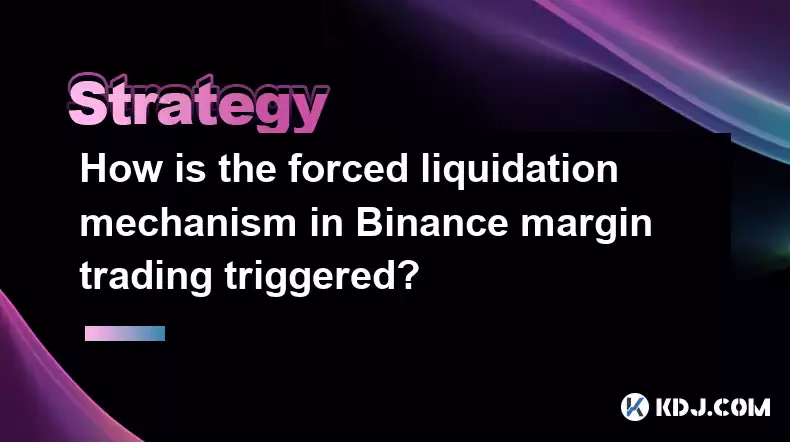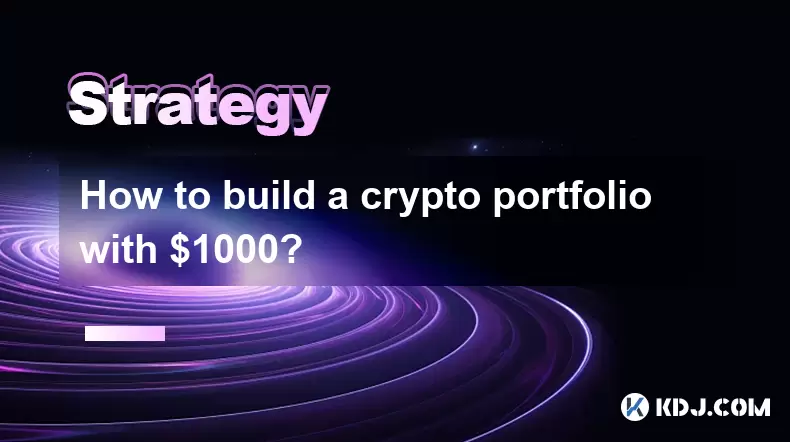-
 Bitcoin
Bitcoin $117300
1.99% -
 Ethereum
Ethereum $3884
5.89% -
 XRP
XRP $3.268
9.33% -
 Tether USDt
Tether USDt $1.000
0.02% -
 BNB
BNB $783.0
1.78% -
 Solana
Solana $173.6
3.51% -
 USDC
USDC $0.9999
0.00% -
 Dogecoin
Dogecoin $0.2193
7.00% -
 TRON
TRON $0.3380
0.30% -
 Cardano
Cardano $0.7769
5.08% -
 Stellar
Stellar $0.4350
9.36% -
 Hyperliquid
Hyperliquid $40.23
5.78% -
 Sui
Sui $3.739
6.95% -
 Chainlink
Chainlink $18.30
9.46% -
 Bitcoin Cash
Bitcoin Cash $581.7
2.11% -
 Hedera
Hedera $0.2577
5.51% -
 Ethena USDe
Ethena USDe $1.001
0.00% -
 Avalanche
Avalanche $23.08
4.23% -
 Litecoin
Litecoin $121.7
2.24% -
 UNUS SED LEO
UNUS SED LEO $8.962
-0.34% -
 Toncoin
Toncoin $3.332
1.36% -
 Shiba Inu
Shiba Inu $0.00001273
3.39% -
 Uniswap
Uniswap $10.35
6.84% -
 Polkadot
Polkadot $3.818
4.01% -
 Dai
Dai $1.000
0.01% -
 Bitget Token
Bitget Token $4.446
2.13% -
 Cronos
Cronos $0.1491
4.96% -
 Monero
Monero $255.4
-9.78% -
 Pepe
Pepe $0.00001099
4.80% -
 Aave
Aave $284.0
8.01%
How is the forced liquidation mechanism in Binance margin trading triggered?
Forced liquidation on Binance occurs when the margin level falls below the maintenance margin, prompting the platform to close positions to prevent further losses.
Apr 05, 2025 at 11:21 pm

In the world of cryptocurrency trading, margin trading on platforms like Binance offers traders the opportunity to amplify their potential returns by borrowing funds to increase their trading position. However, with higher potential returns comes increased risk, including the possibility of forced liquidation. Understanding how the forced liquidation mechanism in Binance margin trading is triggered is crucial for any trader looking to navigate these waters safely.
What is Forced Liquidation?
Forced liquidation is a process initiated by the trading platform when a trader's account falls below the maintenance margin requirement. This mechanism is designed to protect both the trader and the platform from further losses. When a trader's position moves against them, and their account equity dips below the required threshold, the platform will automatically close the position to prevent further losses.
How is Forced Liquidation Triggered on Binance?
The forced liquidation mechanism on Binance is triggered when the account's margin level falls below the maintenance margin level. The margin level is calculated as the ratio of the account's equity to the used margin. Specifically, the formula for the margin level is:
[ \text{Margin Level} = \frac{\text{Account Equity}}{\text{Used Margin}} \times 100 ]
If the margin level drops below the maintenance margin level, which is set at 1.3 for isolated margin and 1.1 for cross margin on Binance, the platform will initiate the liquidation process.
Understanding Margin Levels and Maintenance Margin
To better understand how forced liquidation is triggered, it's important to grasp the concepts of margin levels and maintenance margin. Margin level is a measure of the account's health, indicating how much of the trader's equity is being used to maintain open positions. Maintenance margin is the minimum margin level required to keep positions open. If the margin level falls below this threshold, the position is at risk of liquidation.
The Role of Account Equity and Used Margin
Account equity is the total value of the trader's account, including unrealized profits and losses. Used margin is the amount of funds currently being used to maintain open positions. As market prices fluctuate, the account equity can change, affecting the margin level. If the market moves against the trader's position, the account equity decreases, potentially pushing the margin level below the maintenance margin and triggering liquidation.
Steps Leading to Forced Liquidation
When the margin level approaches the maintenance margin, Binance will issue a margin call, alerting the trader to the risk of liquidation. If the trader does not take action to increase their margin level by depositing more funds or closing part of their position, the platform will proceed with the following steps:
- Monitoring the Margin Level: Binance continuously monitors the margin level of all accounts.
- Issuing a Margin Call: When the margin level approaches the maintenance margin, a margin call is issued.
- Initiating Liquidation: If the margin level falls below the maintenance margin, the platform will automatically start the liquidation process.
- Closing Positions: The platform will close the trader's positions starting with the most unprofitable ones until the margin level is restored above the maintenance margin.
Example of Forced Liquidation on Binance
To illustrate how forced liquidation works, consider a trader who opens a long position on Bitcoin with a margin of $10,000. If the price of Bitcoin drops significantly, the account equity might fall to $9,000. The margin level would then be calculated as:
[ \text{Margin Level} = \frac{9000}{10000} \times 100 = 90\% ]
If the maintenance margin for isolated margin is 130%, the margin level of 90% is well below the threshold, triggering forced liquidation. Binance would then close the trader's position to prevent further losses.
How to Avoid Forced Liquidation
Traders can take several steps to avoid forced liquidation:
- Monitor Margin Levels: Regularly check the margin level to ensure it remains above the maintenance margin.
- Use Stop-Loss Orders: Implement stop-loss orders to automatically close positions if the market moves against them.
- Deposit Additional Funds: If a margin call is issued, deposit more funds to increase the account equity and margin level.
- Reduce Position Size: Close part of the position to reduce the used margin and increase the margin level.
The Impact of Forced Liquidation
Forced liquidation can have significant impacts on a trader's account. It can result in the loss of the entire position, including any unrealized profits. Additionally, the trader may still owe money to the platform if the liquidation does not cover the borrowed funds. Understanding these risks is essential for managing margin trading effectively.
Frequently Asked Questions
Q: Can I set a custom maintenance margin level on Binance?
A: No, Binance sets the maintenance margin levels for isolated and cross margin trading, and these cannot be customized by individual traders.
Q: What happens if I am not online when a margin call is issued?
A: If you are not online when a margin call is issued, Binance will still proceed with the liquidation process if the margin level falls below the maintenance margin. It is crucial to monitor your positions regularly or use stop-loss orders to manage risk.
Q: Can I recover my position after it has been liquidated?
A: Once a position is liquidated, it cannot be recovered. The position is closed, and any remaining funds are credited to your account. To re-enter the market, you would need to open a new position.
Q: Does Binance charge any fees for forced liquidation?
A: Yes, Binance may charge a liquidation fee to cover the costs associated with closing the position. The specific fee structure can be found in Binance's fee schedule.
Disclaimer:info@kdj.com
The information provided is not trading advice. kdj.com does not assume any responsibility for any investments made based on the information provided in this article. Cryptocurrencies are highly volatile and it is highly recommended that you invest with caution after thorough research!
If you believe that the content used on this website infringes your copyright, please contact us immediately (info@kdj.com) and we will delete it promptly.
- Cold Wallet Crypto in 2025: The Future is Now, Ya'll
- 2025-08-08 05:10:13
- MAGACOIN, SOL, and ADA: A Tale of Shifting Tides in Crypto
- 2025-08-08 05:10:13
- SHIB Price, PEPE, and the Memecoin Supercycle: Who Will Reign Supreme?
- 2025-08-08 05:50:12
- Pudgy Penguins Price Prediction: Google Trends & Breakout Signals
- 2025-08-08 05:50:12
- UAE Crypto Regulation: SCA and VARA Unite to Streamline the Future of Digital Assets
- 2025-08-08 05:55:48
- MAGACOIN Finance: The Presale Phenomenon Rocking the Crypto World
- 2025-08-08 05:55:48
Related knowledge

How to avoid common crypto investment mistakes?
Jul 13,2025 at 01:35am
Understanding the Risks of Crypto InvestmentInvesting in cryptocurrency can be highly rewarding, but it also comes with significant risks. One of the ...

What is a long-short crypto strategy?
Jul 15,2025 at 10:56am
Understanding the Basics of a Long-Short Crypto StrategyA long-short crypto strategy is an investment approach where traders simultaneously take long ...

What is a long-short crypto strategy?
Jul 11,2025 at 01:28pm
Understanding the Basics of Long-Short Crypto StrategyA long-short crypto strategy is an investment approach where traders take both long and short po...

How to use the RSI indicator for crypto?
Jul 12,2025 at 03:56pm
Understanding the RSI Indicator in Cryptocurrency TradingThe Relative Strength Index (RSI) is a momentum oscillator used to measure the speed and chan...

Is copy trading a good strategy for crypto beginners?
Jul 12,2025 at 08:28am
Understanding Copy Trading in the Cryptocurrency MarketCopy trading is a strategy where novice traders replicate the trades of experienced investors a...

How to build a crypto portfolio with $1000?
Jul 13,2025 at 08:14pm
Understanding the Basics of Cryptocurrency InvestmentBuilding a crypto portfolio with $1000 starts with understanding the fundamentals of cryptocurren...

How to avoid common crypto investment mistakes?
Jul 13,2025 at 01:35am
Understanding the Risks of Crypto InvestmentInvesting in cryptocurrency can be highly rewarding, but it also comes with significant risks. One of the ...

What is a long-short crypto strategy?
Jul 15,2025 at 10:56am
Understanding the Basics of a Long-Short Crypto StrategyA long-short crypto strategy is an investment approach where traders simultaneously take long ...

What is a long-short crypto strategy?
Jul 11,2025 at 01:28pm
Understanding the Basics of Long-Short Crypto StrategyA long-short crypto strategy is an investment approach where traders take both long and short po...

How to use the RSI indicator for crypto?
Jul 12,2025 at 03:56pm
Understanding the RSI Indicator in Cryptocurrency TradingThe Relative Strength Index (RSI) is a momentum oscillator used to measure the speed and chan...

Is copy trading a good strategy for crypto beginners?
Jul 12,2025 at 08:28am
Understanding Copy Trading in the Cryptocurrency MarketCopy trading is a strategy where novice traders replicate the trades of experienced investors a...

How to build a crypto portfolio with $1000?
Jul 13,2025 at 08:14pm
Understanding the Basics of Cryptocurrency InvestmentBuilding a crypto portfolio with $1000 starts with understanding the fundamentals of cryptocurren...
See all articles

























































































